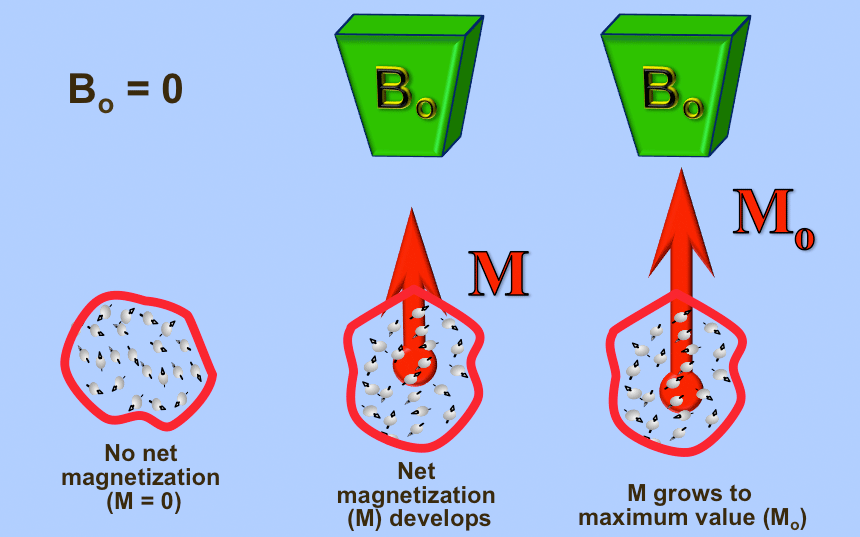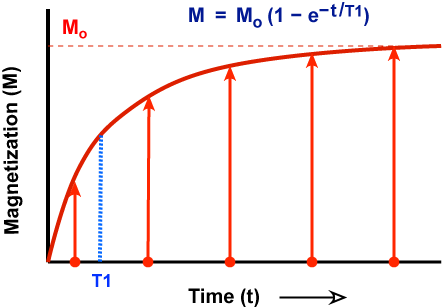|
M grows as a simple exponential with time constant T1. T1 is also called the spin-lattice, thermal or longitudinal relaxation time. On the graph it corresponds to the time required for M to grow to (1 − 1/e) or about 63% of its final value (Mo). We will have much, much more to say about T1 in future Q&A's!
|
No. It may take up to several seconds for the net magnetization (M) to fully develop when an unmagnetized substance is first placed in an external magnetic field (Bo). It will grow until it reaches a final equilibrium value of Mo. |
Advanced Discussion (show/hide)»
The growth of longitudinal magnetization (M) is accompanied by a statistically higher fraction of spins moving into lower energy ("spin-up") states. Accordingly, the overall energy level of the spin system decreases as M increases. Thermodynamic considerations require that this energy be transferred out of the spin system. This occurs via thermal motion/heat deposited into nearby atoms and molecules (the "lattice").
You might wonder if it is possible to measure the net magnetization (M) directly as it grows to reach its final value, Mo. The answer is yes for small in vitro specimens, but requires the use of SQUIDs (superconducting quantum interference devices), highly sensitive magnetometers that can detect very subtle changes in the longitudinal magnetic field. For an interesting review of this topic, see Greenberg YS. Application of superconducting quantum interference devices to nuclear magnetic resonance. Rev Mod Phys 1998; 70:175-222.
If a system seeks to minimize its total energy level, why don't all the protons simply fall into the lower energy state?
What is net magnetization and how does it apply to NMR?


